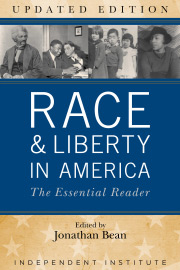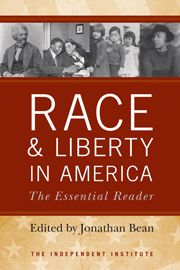The Supreme Court recently heard oral arguments in Fisher v. University of Texas as it again prepares to apply the constitutional standard known as “strict scrutiny” to racial preferences in college admissions. Opponents of racial preferences of course hope the court will rule that the standard bars such preferences. But even if it does (which is unlikely), nothing will change very much. “Strict scrutiny” has a twisted history that cannot—and should not—resolve issues of fundamental civil rights. The real standard ought to be absolute nondiscrimination.
Necessity is the mother of invention. In 1944 a court majority deemed the strict-scrutiny standard “necessary” in order to uphold the internment of Japanese Americans during World War II. It did so while stating that racial discrimination in general is “suspect” and, to pass constitutional muster, must serve a “compelling governmental interest,” which the majority found in the case of internment. Justice Frank Murphy vigorously dissented “from this legalization of racism. Racial discrimination in any form and in any degree has no justifiable part whatever in our democratic way of life.”
Later, Congress passed the color-blind Civil Rights Act of 1964, which prohibited racial discrimination of any kind. But the court rejected the clear legislative intent of the act (color-blind law) when it invented “diversity” as a loophole for universities to circumvent the guarantee of equal protection (Bakke, 1978). Ever since, the court has applied Goldilocks reasoning to the various ways universities discriminate: This form is too rigid (therefore no quotas); another is too vague; but some racial “diversity” preference is acceptable if it produces “educational benefits.”
None of this provides rule-of-law guidance to universities that are determined to discriminate. Thus those advocating nondiscrimination sued the University of Texas again because the college refused to provide evidence supporting the need for “diversity” preferences (as the court required in the first Fisher case).
So we arrive at Fisher II, which will likely again kick the can down the road. Even when universities run afoul of the court (as happened in a 2003 case), the justices act as if the universities tried to do the right thing but simply failed in that one instance. The court’s deference to university officials’ specious arguments borders on submissiveness.
Can we return to principled, predictable, and color-blind law? One way would be to accept the plain meaning of the Civil Rights Act of 1964: Forbid all discrimination in programs that receive federal aid. That position was taken by four justices in Bakke. With that act, the crowning achievement of the civil-rights movement, Congress did everything in its power to emphasize nondiscrimination. Period. Yet, in decision after decision, the court has undone that achievement.
It would do no good to pass another Civil Rights Act mandating nondiscrimination, since we already have one that the court ignores. The root problem is the court’s invention of “strict scrutiny” and application of other contrived criteria to civil-rights cases (including “diversity” and “critical mass of underrepresented minorities”). Such scrutiny is strict in theory, deferential in practice. Indeed, it must be deferential in some cases: The original point was to have a reason to uphold internment! Then and now, the court legally engineers outcomes that it believes are beneficial, even if they are unconstitutional by classic pre-strict-scrutiny standards—Justice Murphy’s Law, as it were.
Perhaps the constitutional system of checks and balances has failed us. Congress could never force the court to interpret the law as written, and the executive branch has committed mischief of its own (racial discrimination backed by executive orders and agency rulings).
Nevertheless, “nothing is settled that is not right,” in the words of Frederick Douglass. We deserve the rule of law not men. Under the Constitution, properly understood, strict scrutiny does not exist. Its imposition is no more right than any other unjust exercise of power. Civil-rights decisions ought to be based on adherence to the Equal Protection Clause of the Constitution and the absolute nondiscrimination yardstick of the Civil Rights Act.
With Fisher II the Supreme Court could take a huge step forward by turning the civil-rights clock back to 1964. The near certainty that the court will continue to muddle the law is dispiriting. Knowing how we got into this “strict scrutiny” mess is a place to start.









